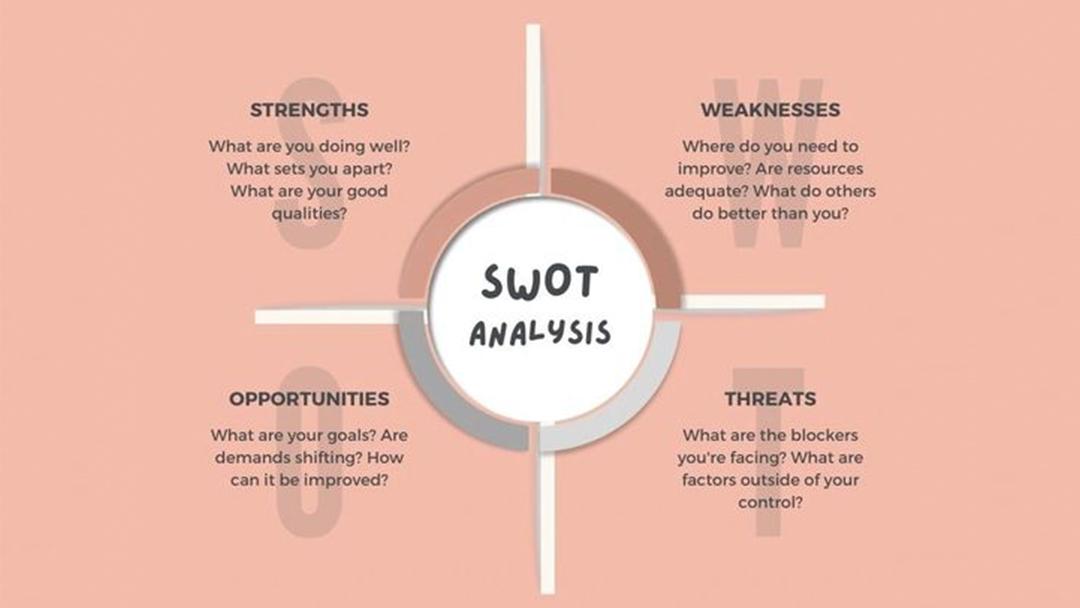
A SWOT analysis is one of the most powerful and simple tools you can have. It provides an overview of your business and it should be included in every business plan since it helps the business owner identify his/her strengths and weaknesses, as well as any opportunities and threats.
We’re in a challenging moment where competition is fierce. A SWOT analysis for small businesses can help today’s companies address weaknesses, double down on what they do well, and position themselves to succeed in the new normal and beyond.
In this blog will walk you through how to conduct a SWOT analysis and provide some tips that will help you use the tool effectively.
Every SWOT analysis should include 4 categories that you can organize into external and internal factors:

Internal factors
- Strengths: This is the first step, identify the business’s attributes that will help you achieve your goals. Think about your selling points, teams, processes, technical expertise, tools and other factors contributing to business success. Your business’ strengths are the key to loyal customers.
- Weaknesses: Your main priority here is to identify the company’s weaknesses both internally and externally. Think about your business’ attributes that could hurt your progress in achieving your objective and are not operating as efficiently as they could and how to convert them into strengths.
This could include external environment factors such as pricing, competition, lowered
demand, and more. It can also include internal weaknesses that negatively affect the
business, such as lack of budget, small teams, poor after-sales communication etc.
External factors
- Opportunities: Opportunities can present themselves at any time, and as a small business you need to be ready to take advantage of them whenever they arise. Having identified their strengths and weaknesses through SWOT analysis, businesses can understand how to capitalize on opportunities – and where they need improvements.
Think of the external factors you’ve identified and where your business might have an
opportunity to grow and achieve your objectives.
- Threats: Threats are external factors that could damage your business’s performance. We live in an unpredictable world, but businesses can try to future-proof themselves in key areas.
Tips to conduct a SWOT analysis for small business
Here are some tips to ensure you’re getting the most out of a SWOT analysis:
- Don’t be afraid: You will need to confront every part of the business: the good, the bad, and everything in between. Of course, it can be difficult to put down everything and objectively confront aspects of the business, but it’s important to be truly objective about your business if you want to improve.
- Ask for feedback: build a team to work on the SWOT analysis with a particular mix of perspectives and skills and ask them for feedback and suggestions. The most important thing is to allow people to share their views in an open and non-judgmental setting.
- Plan and create timelines: When everyone has shared their ideas, it’s time to identify key areas of focus, choose a methodology and decide on a timeline. The analysis needs to be actionable, therefore you need to create timelines alongside to meet your goals.
Whatever the opportunity or challenge your business is facing today, we can provide expert advice focused on getting you the results you’ve set for your business. Contact us!




